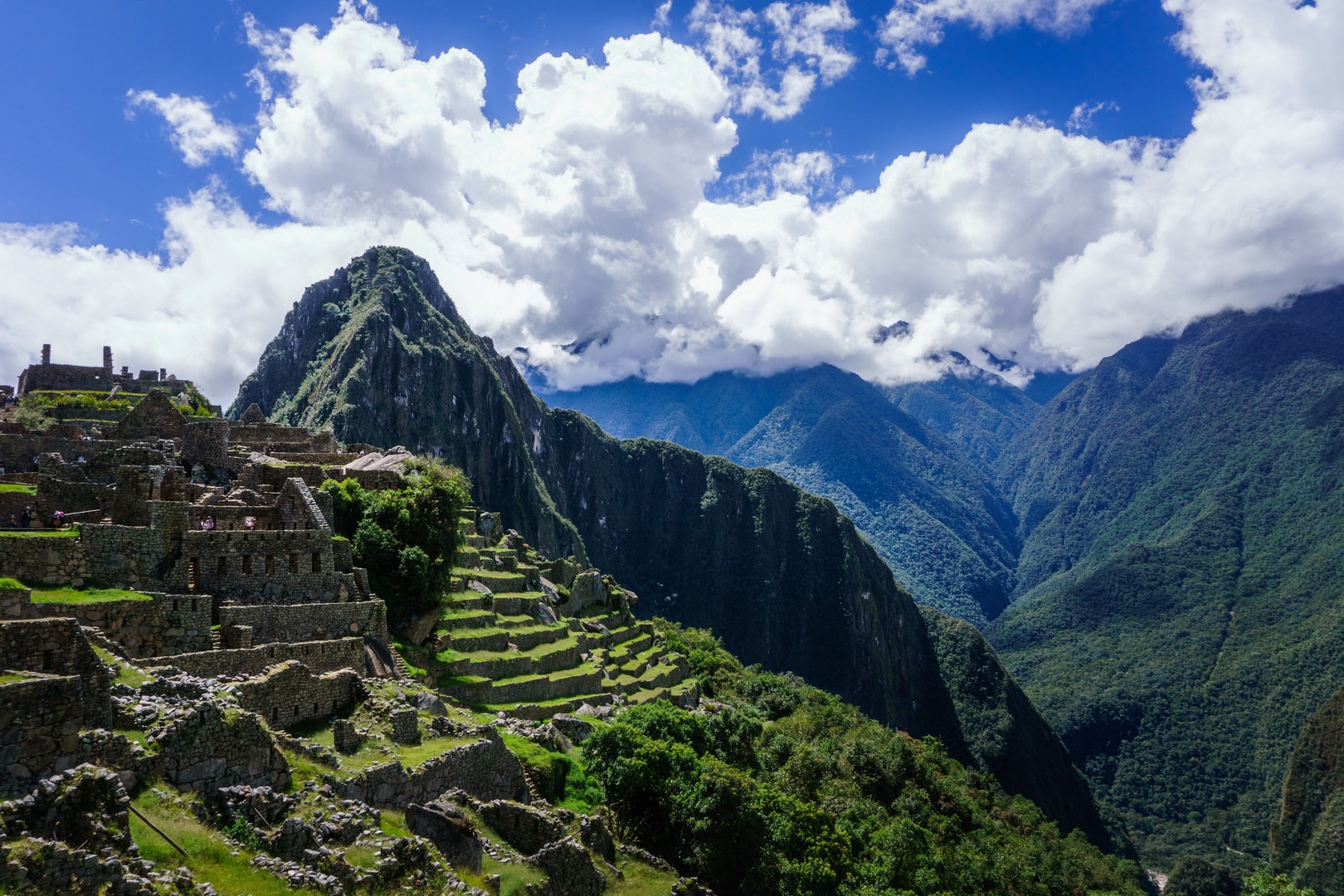You are here
The four-day, three-night trek through the Andes Mountains on Peru’s Inca Trail is one of the world’s most sought-after backpacking trips, and with good reason. Built by the Incas in the 15th century, the route traverses the Andean mountains between Cusco and Machu Picchu and was built as a pilgrimage path connecting many sacred and ritualistic sites as it climbs high mountain passes and dips into cloud forests thick with moss and orchids. The trail is rich in history and glides through half a dozen ancient ruins before the grand conclusion of Machu Picchu itself.
The modern trekking version of the Inca Trail extends from Ollantaytambo to the mystical ruins of Machu Picchu, though the original trail system was far more extensive, spanning throughout Peru, Bolivia, Ecuador, Colombia, and western Brazil. The trail is steep, narrow, and often exposed, providing a heart-thumping challenge for anyone who sets foot on it. Due to harsh permit restrictions, the Peruvian government has made it necessary to embark on the trek with a guide or tour company to preserve the sanctity of the historical preserve.
Day one is a relatively easy 14-kilometer meander through the foothills of the Andes with sweeping views of the Urubamba River and, if you’re lucky, the Veronica Glacier, which hangs above you at 5,893 meters. After the impressive ruins of Patallaqta you’ll climb about 609 meters, stopping for lunch along the way, before reaching the evening’s campsite. Most tour companies take their food very seriously, so if you choose wisely, you’re in for a treat. Lunch and dinner will be full of tasty meat and veggie options, with tea, coffee, and often dessert too!
Day two is considered by many to be the roughest of the journey. The early morning climb up to Dead Woman’s Pass takes you just above 4,206 meters, with jaw-dropping panoramas of towering Andean peaks surrounding you. Llamas and alpacas graze on neighboring mountaintops, villagers set up stands here and there to sell you snacks, and the big, granite steps feel as though they’ll never end. This high elevation section of the Inca Trail looks like something straight out of Jurassic Park or Lord of the Rings with scenery so striking that it feels like it must be magic.
After a long ascent and descent of Dead Woman’s Pass, you’ll stop for lunch before climbing the 3,962-meter Runkurakay Pass. With the hardest part of the trek behind you, descending from this point to the campsite is heavenly when the sun peeks through the afternoon clouds in brilliant rays of gold. The ruins of Sayacmarca greet you on the way down as the sun sets, filling the valley with rose- and orange-colored light. At 3,599 meters, Chaquicocha is the highest campsite of the trip and features fantastic opportunities for stargazing if conditions are right.*
The third day of the trek is a leisurely stroll over rolling hills and through a high-elevation cloud forest where hundreds of different kinds of orchids grow. Because the hiking mileage on this day is more mellow, there is ample time to explore the many ruins you pass along the way. Phuyupatamarca, Intipata, and Wiñay Wayna are some of the more breathtaking Incan sites the trail visits, sporting massive agricultural terraces and opportunities to snap a photo with a llama up close. With the third and final campsite so close to the ruins of Wiñay Wayna, it’s a great place to watch the sun fade behind the higher peaks before heading to bed early the last night.
Most groups elect to wake up around 3 a.m. on the final morning so that they can rush to be one of the first in line at the Inca Trail checkpoint that opens at 5:30 a.m. Behind this fence is the last bit of the pathway to Machu Picchu, first climbing up to Inti Punku, the sun gate, and then descending to the lost city itself. Though crowded, the famous village is totally majestic, perched atop a ridgeline with sweeping views of the Urubamba Valley. Your guide will likely give a two- to three-hour tour of the ruins before setting you loose to explore on your own. The more adventurous can book an additional permit in advance to climb another 304 meters straight up Huayna Picchu, a neighboring mountain, giving a vertigo-inducing view down on Machu Picchu itself. A bus takes you back to Aguas Calientes where you can stay or take a train back to Ollantaytambo or Cusco for the night.
*Please note that some trekking companies arrange their campsites a bit differently, but many of the major ones follow this exact route.
Logistics + Planning
Current Weather: Powered by Dark Sky































Comments
Sign In and share them.